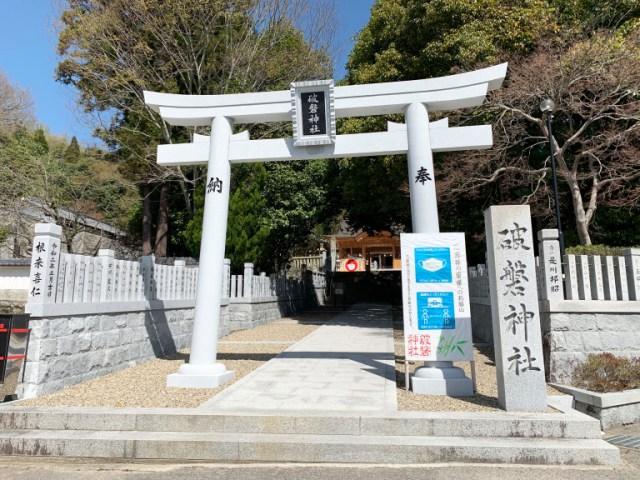
This shrine’s anime-level boulder has an anime-level backstory.
One of the cool things about Japan is that looking at the names of places gives you a sense of their history or distinguishing characteristics. “Tokyo,” for example, famously means “eastern capital,” because it’s located at the eastern end of the country, and its “Ginza” district means “silver seat,” a nod to the mint that used to be located in the neighborhood.
And then there’s Haban Shrine, whose name means “destroyed rock.”
But it was more than just linguistic curiosity that had our Japanese-language reporter Seiji Nakazawa intrigued. Having heard that the shrine has a split boulder, or wareiwa, he was instantly reminded of the scene in Demon Slayer: Kimetsu no Yaiba where hero Tanjiro slices through a rock with his katana, and felt compelled to make the trip out to Himeji, in Hyogo Prefecture, to visit Haban Shrine for himself.
Now, hearing “Himeji,” most people first envision Himeji Castle, in the developed city center where the Shinkansen bullet train stops. Haban Shrine, though, is in the rural outskirts of the town, near Oichi Station on the Kishin Line. Even though it’s only about a 15-minute ride from Himeji Station, the surroundings are pure countryside.
The shrine’s torii gate is visible from the platform, and just a five-minute walk away, so Seiji strolled right over.
Rustic as the scenery may be, the shrine itself is remarkably well maintained, with a picturesque stone path and shrine hall. The principal deity enshrined here is Sugawara no Michizane, also known as Tenjin, the god of learning, so Seiji paused to say a quick prayer in hopes of boosting his mental capacity.
However, Seiji couldn’t spot the split boulder anywhere, so he headed over to one of the buildings where a miko (shrine maiden) was posted to ask where it was. He then learned that Haban Shrine’s wareiwa isn’t actually on the shrine grounds, but elsewhere in town. The miko did give him a map that showed its location, though.
▼ Haban Shrine (red), Oichi Station (blue) and wareiwa (green)
“Ah, OK, just back over the railroad tracks, and two signal lights away,” thought Seiji. “No sweat.”
However, Seiji had momentarily forgotten that he wasn’t in Tokyo anymore, and “two blocks” is a much longer distance in the country than it is in the city, and the walk ended up taking close to half an hour. Still, it was nice to take in some wide-open views, and he had audio accompaniment from the warblers calling out from the trees around town.
Eventually, he got to the second signal light, which looks like a T-intersection at first glance, but actually has another small street that leads down a slope.
Go down that path, and after a while you’ll spot a sign for the split boulder (われ岩) on your right side. Hang a right at the sign, and from there it’s straight on into the foothills…
…and through a bamboo grove…
…until you see the wareiwa!
Wrapped around the boulder is a braided shimenawa purification rope, and running from top to bottom is a deep gash that cleaves the stone in two in its upper section.
▼ Seiji, with his hair still showing signs of his Kyojuro Rengoku makeover, snapped a photo with the Demon Slayer-like rock.
But of course, Haban Shrine, is much, much older than Demon Slayer, which made its manga debut in 2016, so obviously this wasn’t Tanjiro’s handiwork. So if the shrine’s boulder wasn’t split by swordsman Tanjiro, who was it split by?
According to local legends, by Empress Jingu, who is thought to have ruled Japan nearly two millennia ago, from 201 to 269.
The story goes that after Jingu’s husband, the Emperor Chuai, was killed by rebels, the empress took brutal vengeance upon them. Grabbing a bow, she fired a hail of arrows at the rebel forces, and her third shot hit the Haban Shrine boulder with such force that it tore a vertical chunk out of it.
Empress Jingu didn’t need a blade to slice up a boulder, and as Seiji left, he couldn’t help thinking Demon Slayers demons would have been slayed a lot more quickly had she been part of its band of heroes.
Photos © SoraNews24
● Want to hear about SoraNews24’s latest articles as soon as they’re published? Follow us on Facebook and Twitter!
[ Read in Japanese ]


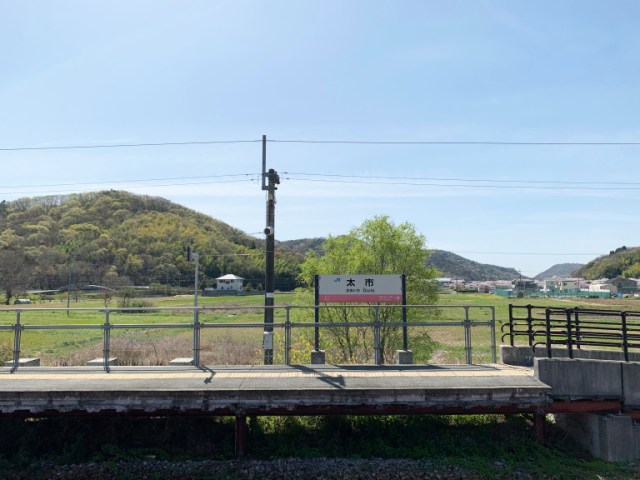
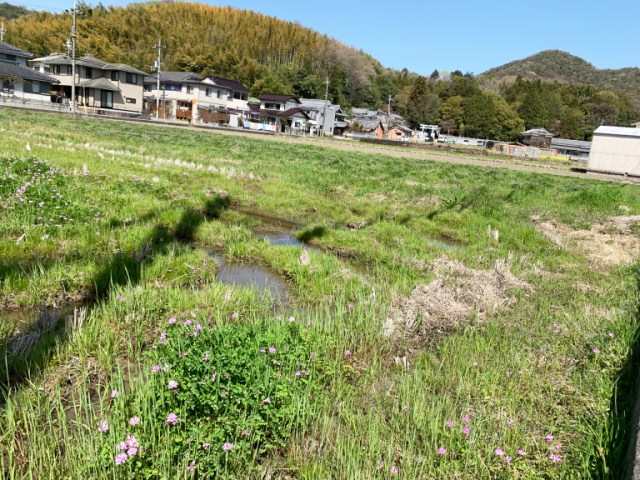
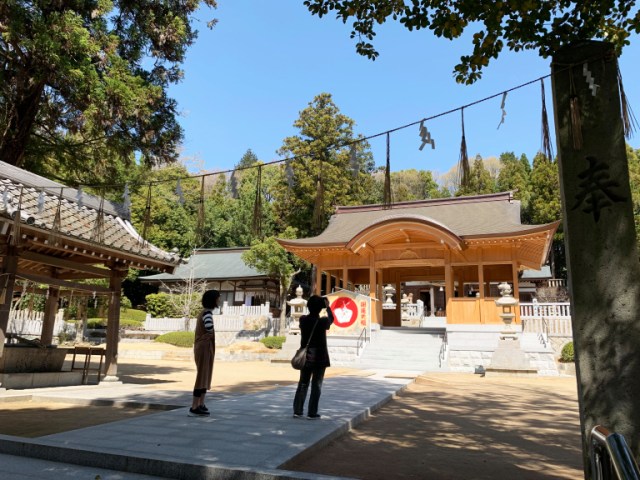
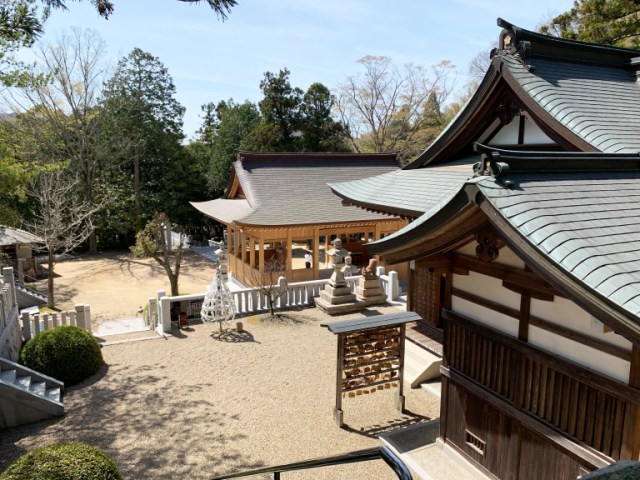
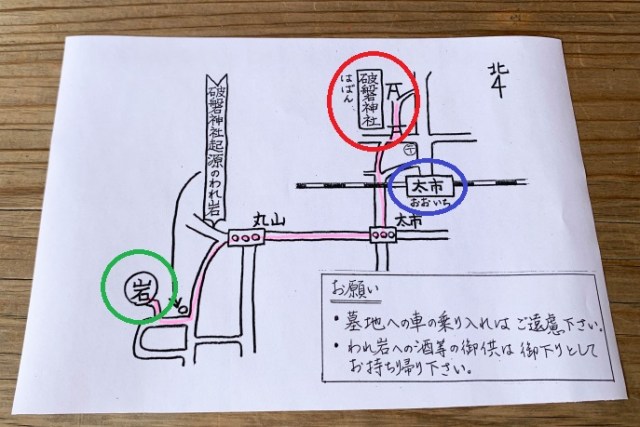
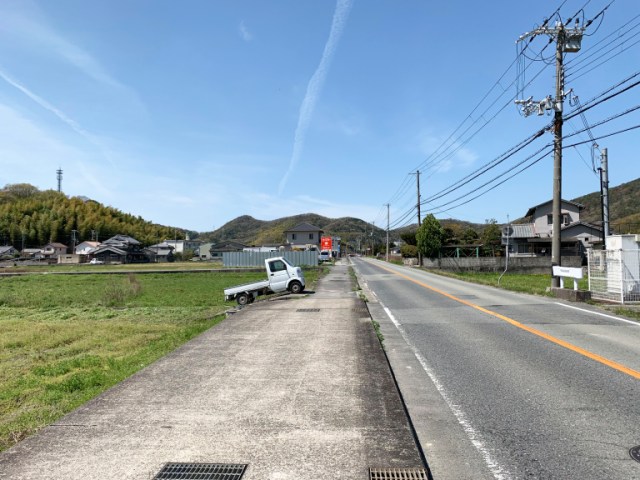
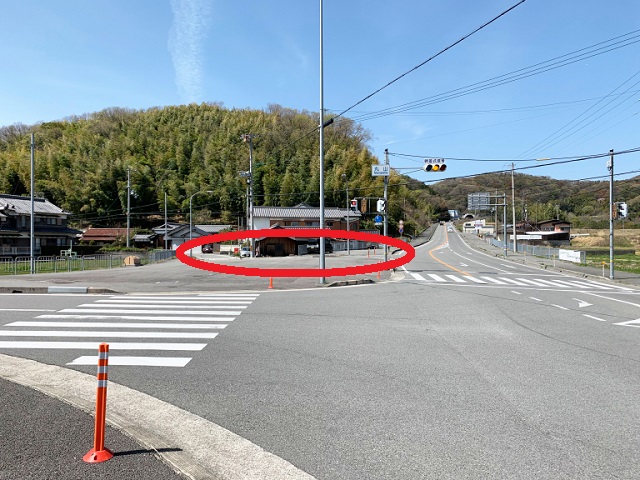
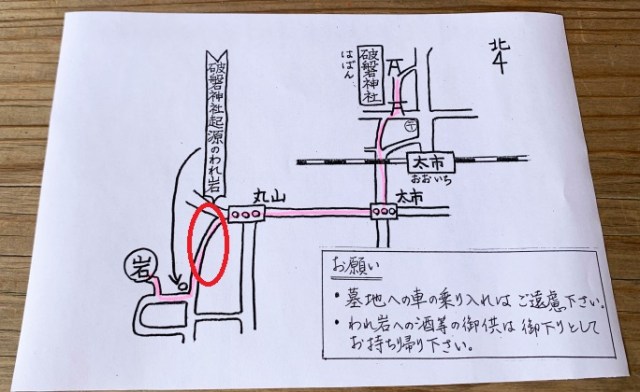
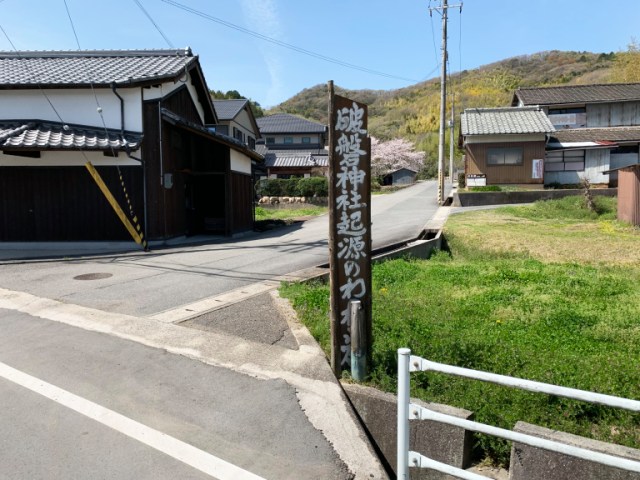
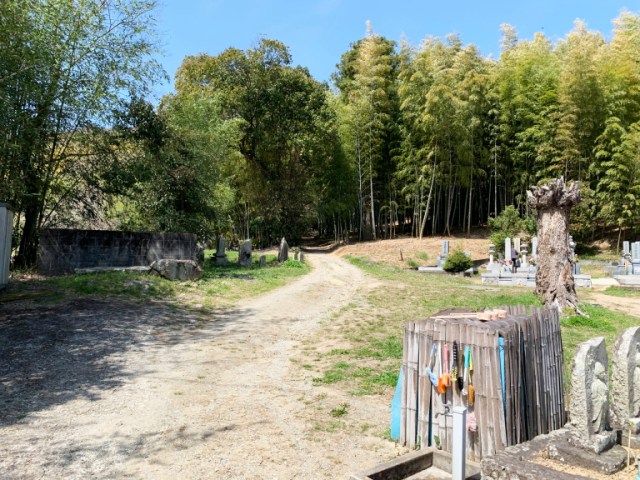
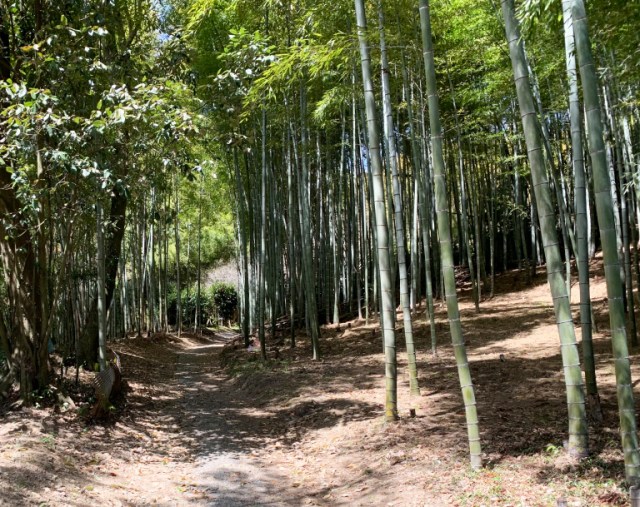
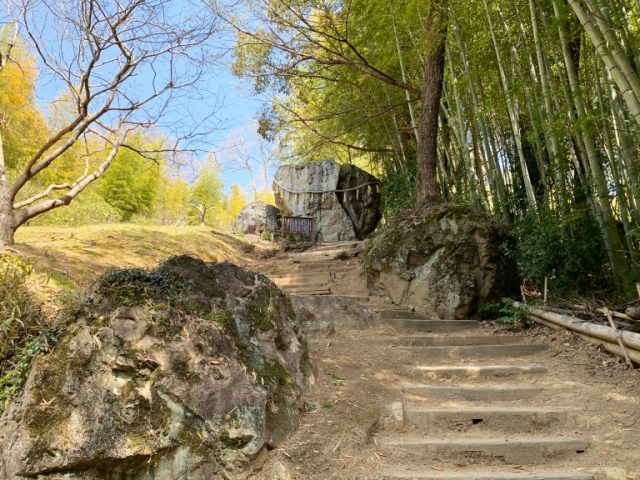
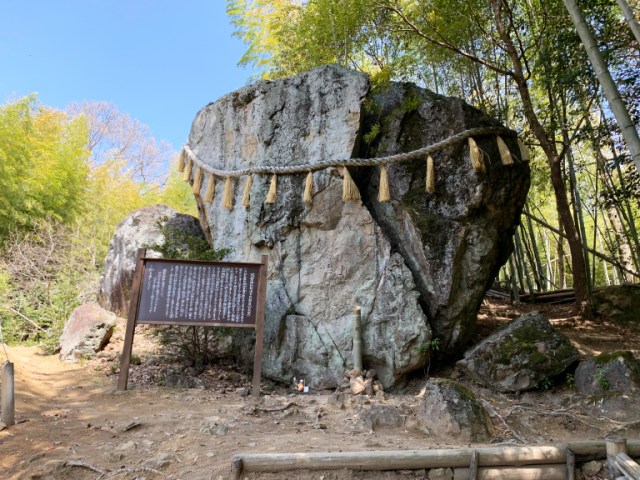
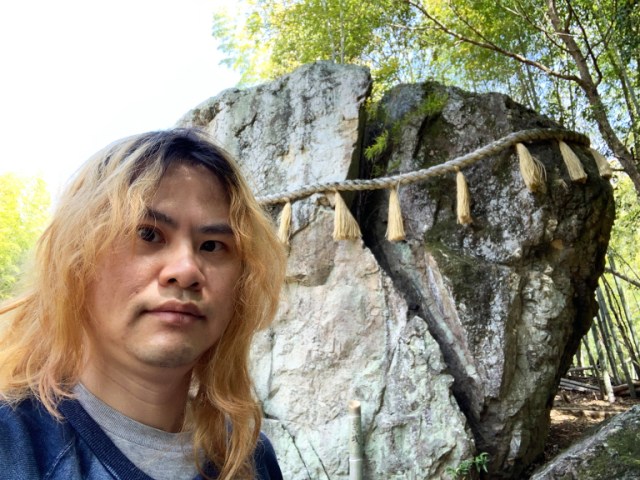

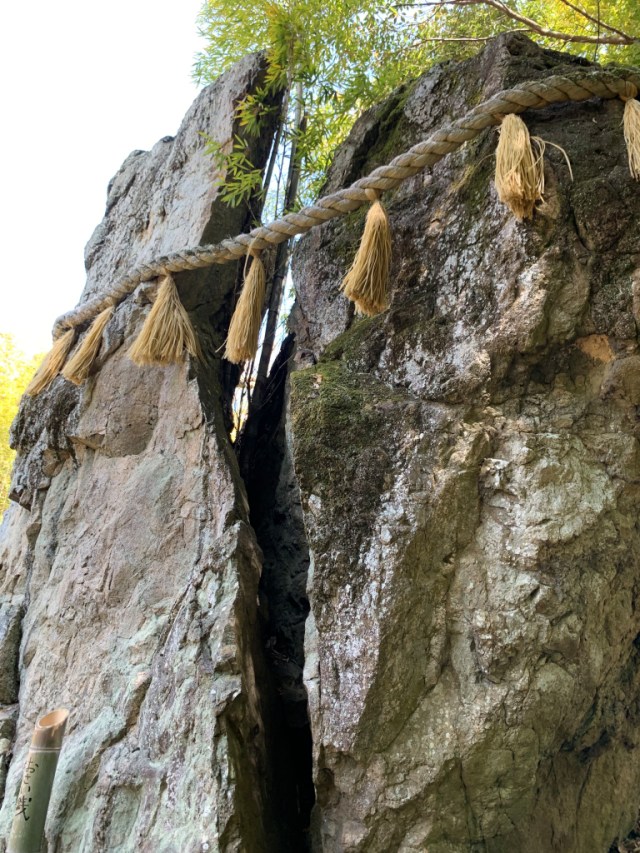
 Why this centuries’ old Shinto shrine is suddenly also a hot spot for anime fan art【Photos】
Why this centuries’ old Shinto shrine is suddenly also a hot spot for anime fan art【Photos】 Demon Slayer anime airplane set to take flight in Japan
Demon Slayer anime airplane set to take flight in Japan These gigantic SD Demon Slayer plushies definitely aren’t chibi【Photos】
These gigantic SD Demon Slayer plushies definitely aren’t chibi【Photos】 Demon Slayer: Kimetsu no Yaiba is “jacking” everyone’s seat at the movies in Japan
Demon Slayer: Kimetsu no Yaiba is “jacking” everyone’s seat at the movies in Japan Demon Slayers in the sky with new Kimetsu no Yaiba anime-themed airliner from ANA
Demon Slayers in the sky with new Kimetsu no Yaiba anime-themed airliner from ANA Nintendo’s Kirby now delivering orders at Kura Sushi restaurants, but not in Japan
Nintendo’s Kirby now delivering orders at Kura Sushi restaurants, but not in Japan This Osaka laundromat wants to clean more than your clothes; it also wants to clean you
This Osaka laundromat wants to clean more than your clothes; it also wants to clean you Japan’s EF English Proficiency Index rank drops for 11th straight year, hits lowest ever
Japan’s EF English Proficiency Index rank drops for 11th straight year, hits lowest ever 10 Japanese expressions that sound delightfully strange and funny when translated
10 Japanese expressions that sound delightfully strange and funny when translated Popular Japanese ramen restaurant Ichiran’s lucky bags are great value for money
Popular Japanese ramen restaurant Ichiran’s lucky bags are great value for money Totoro, Spirited Away tenugui tapestries promise good luck at New Year’s, smiles all the time【Pics】
Totoro, Spirited Away tenugui tapestries promise good luck at New Year’s, smiles all the time【Pics】 Japanese island with a population less than 10 is a hidden gem you won’t find in travel guides
Japanese island with a population less than 10 is a hidden gem you won’t find in travel guides Tokyo’s Ueno Station has an unmanned noodle restaurant on its platform, and its no-joke good
Tokyo’s Ueno Station has an unmanned noodle restaurant on its platform, and its no-joke good Studio Ghibli stamps lift your spirits with motivational phrases from Totoro
Studio Ghibli stamps lift your spirits with motivational phrases from Totoro What’s inside a Family Mart Grand Opening Lucky Bag?
What’s inside a Family Mart Grand Opening Lucky Bag? Japan’s human washing machines will go on sale to general public, demos to be held in Tokyo
Japan’s human washing machines will go on sale to general public, demos to be held in Tokyo Japanese train company is letting fans buy its actual ticket gates for their homes
Japanese train company is letting fans buy its actual ticket gates for their homes Yoshinoya adds first-ever chain-wide ramen with new beef and pork-broth noodle hot pot meals
Yoshinoya adds first-ever chain-wide ramen with new beef and pork-broth noodle hot pot meals Is China’s don’t-go-to-Japan warning affecting tourist crowds in Shibuya’s Don Quijote?
Is China’s don’t-go-to-Japan warning affecting tourist crowds in Shibuya’s Don Quijote? Japan considering raising international traveler departure tax even more than previously reported
Japan considering raising international traveler departure tax even more than previously reported Is China’s don’t-go-to-Japan warning affecting tourist crowd sizes in Nara?
Is China’s don’t-go-to-Japan warning affecting tourist crowd sizes in Nara? New fish discovered and named “Vanderhorstia supersaiyan” for obvious reasons
New fish discovered and named “Vanderhorstia supersaiyan” for obvious reasons Japanese town suing resident for being a jerk
Japanese town suing resident for being a jerk Starbucks Japan unveils new Christmas goods and a rhinestone tumbler that costs 19,500 yen
Starbucks Japan unveils new Christmas goods and a rhinestone tumbler that costs 19,500 yen Real-world Nausicaa Ghibli anime glider completes its final flight in Japan【Video】
Real-world Nausicaa Ghibli anime glider completes its final flight in Japan【Video】 Brand-new Pokémon park opens in Japan with larger-than-life-size Lapras【Photos】
Brand-new Pokémon park opens in Japan with larger-than-life-size Lapras【Photos】 Unique inclined elevator in Japan leads to a town that inspired Studio Ghibli’s Spirited Away
Unique inclined elevator in Japan leads to a town that inspired Studio Ghibli’s Spirited Away Is China’s don’t-go-to-Japan warning affecting tourist crowds in Tokyo’s Asakusa neighborhood?
Is China’s don’t-go-to-Japan warning affecting tourist crowds in Tokyo’s Asakusa neighborhood? The 10 best day trips from downtown Tokyo【Survey】
The 10 best day trips from downtown Tokyo【Survey】 Naturally brown-haired Osaka student sues government for forcing her to dye her hair black
Naturally brown-haired Osaka student sues government for forcing her to dye her hair black Tokyo hotel lets you make your stay a Sanrio one with special My Melody and Kuromi rooms【Pics】
Tokyo hotel lets you make your stay a Sanrio one with special My Melody and Kuromi rooms【Pics】 Survey asks foreign tourists what bothered them in Japan, more than half gave same answer
Survey asks foreign tourists what bothered them in Japan, more than half gave same answer Japan’s deadliest food claims more victims, but why do people keep eating it for New Year’s?
Japan’s deadliest food claims more victims, but why do people keep eating it for New Year’s? We deeply regret going into this tunnel on our walk in the mountains of Japan
We deeply regret going into this tunnel on our walk in the mountains of Japan Studio Ghibli releases Kodama forest spirits from Princess Mononoke to light up your home
Studio Ghibli releases Kodama forest spirits from Princess Mononoke to light up your home Major Japanese hotel chain says reservations via overseas booking sites may not be valid
Major Japanese hotel chain says reservations via overseas booking sites may not be valid Put sesame oil in your coffee? Japanese maker says it’s the best way to start your day【Taste test】
Put sesame oil in your coffee? Japanese maker says it’s the best way to start your day【Taste test】 The top 10 annoying foreign tourist behaviors on trains, as chosen by Japanese people【Survey】
The top 10 annoying foreign tourist behaviors on trains, as chosen by Japanese people【Survey】 No more using real katana for tourism activities, Japan’s National Police Agency says
No more using real katana for tourism activities, Japan’s National Police Agency says J-pop mega star Ado reveals she’s been living in the U.S., may not understand language acquisition
J-pop mega star Ado reveals she’s been living in the U.S., may not understand language acquisition Demon Slayer teams up with beef bowl chain to excite fans, test their dexterity with Tanjiro bowl
Demon Slayer teams up with beef bowl chain to excite fans, test their dexterity with Tanjiro bowl Demon Slayer’s Mugen Train is now ready to be your personal home sushi train too【Photos】
Demon Slayer’s Mugen Train is now ready to be your personal home sushi train too【Photos】 Huge 301,390-square foot Demon Slayer anime rice paddy art project planned, Tanjiro will be eaten
Huge 301,390-square foot Demon Slayer anime rice paddy art project planned, Tanjiro will be eaten Demon Slayer pulls off feat no other series has done with Japan’s biggest anime magazines【Pics】
Demon Slayer pulls off feat no other series has done with Japan’s biggest anime magazines【Pics】 Can a Tokyo hair salon change you into today’s hottest anime character from Demon Slayer?【Photos】
Can a Tokyo hair salon change you into today’s hottest anime character from Demon Slayer?【Photos】 Moms vs. demon slayers — Japanese grade schoolers asked: “Who do you respect most and why?”
Moms vs. demon slayers — Japanese grade schoolers asked: “Who do you respect most and why?” We have way too much fun making Demon Slayer anime erasers and badges with craft kits
We have way too much fun making Demon Slayer anime erasers and badges with craft kits Wield a life-size replica of Tanjiro’s demon-slaying Nichirin Blade for your next cosplay
Wield a life-size replica of Tanjiro’s demon-slaying Nichirin Blade for your next cosplay Demon Slayer: Kimetsu no Yaiba desserts are some of the most beautiful anime sweets ever【Photos】
Demon Slayer: Kimetsu no Yaiba desserts are some of the most beautiful anime sweets ever【Photos】 Tokyo Skytree to light up in Demon Slayer character colors as part of tie-up event with anime hit
Tokyo Skytree to light up in Demon Slayer character colors as part of tie-up event with anime hit Demon Slayer anime franchise gets new edible content with Kimetsu no Yaiba-yaki sweets【Tasting】
Demon Slayer anime franchise gets new edible content with Kimetsu no Yaiba-yaki sweets【Tasting】 Demon Slayer Nichiren Blades ready for new duty: Slicing through your sweets as dessert knives
Demon Slayer Nichiren Blades ready for new duty: Slicing through your sweets as dessert knives Is the Universal Studios Japan Demon Slayer ride worth riding if you’re not a Demon Slayer fan?
Is the Universal Studios Japan Demon Slayer ride worth riding if you’re not a Demon Slayer fan? Fujiyama Shrine has nothing to do with Mt. Fuji, everything to do with springtime beauty【Photos】
Fujiyama Shrine has nothing to do with Mt. Fuji, everything to do with springtime beauty【Photos】 Demon Slayer inspires us to build an old-timey Japanese puzzle box of our own
Demon Slayer inspires us to build an old-timey Japanese puzzle box of our own
Leave a Reply